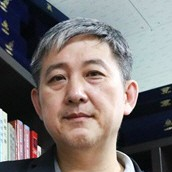Nanomaterials for Environmental and Biological Monitoring
A special issue of Sensors (ISSN 1424-8220). This special issue belongs to the section "Biosensors".
Deadline for manuscript submissions: closed (31 October 2021) | Viewed by 8556
Special Issue Editor
Interests: environmental & biomedical monitoring; air quality & environmental engineering; material engineering; coordination polymers; metal-organic frameworks (MOFs)
Special Issues, Collections and Topics in MDPI journals
Special Issue Information
Dear Colleague,
Over the past decades, advances in nanotechnology have been achieved through the synthesis and/or production of new and improved nanomaterials (NMs: e.g., imprinted polymers (IPs), metal–organic frameworks (MOFs), carbon nanotubes (CNTs), quantum dots (QDs), metal oxides (MOs), and their diverse derivatives). These NMs have been applied extensively to develop various sensing tools and devices in various fields due to their numerous favorable properties in terms of porosity, surface area, pore volume, receptor sites, thermal and chemical stability, selectivity, low toxicity, luminescence, and chemical functionality. The introduction of these advanced functional NMs has contributed greatly to the progress of NM-based sensing technology to resolve the limitations that conventional methods suffer from. In light of this advancement in NM-based sensing technology, this Special Issue is proposed to invite researchers who have been involved in the development and application of sensing techniques to detect various targets (metals, organics, and biological targets) in diverse environmental or biological media.
Prof. Dr. Ki-Hyun Kim
Guest Editor
Manuscript Submission Information
Manuscripts should be submitted online at www.mdpi.com by registering and logging in to this website. Once you are registered, click here to go to the submission form. Manuscripts can be submitted until the deadline. All submissions that pass pre-check are peer-reviewed. Accepted papers will be published continuously in the journal (as soon as accepted) and will be listed together on the special issue website. Research articles, review articles as well as short communications are invited. For planned papers, a title and short abstract (about 100 words) can be sent to the Editorial Office for announcement on this website.
Submitted manuscripts should not have been published previously, nor be under consideration for publication elsewhere (except conference proceedings papers). All manuscripts are thoroughly refereed through a single-blind peer-review process. A guide for authors and other relevant information for submission of manuscripts is available on the Instructions for Authors page. Sensors is an international peer-reviewed open access semimonthly journal published by MDPI.
Please visit the Instructions for Authors page before submitting a manuscript. The Article Processing Charge (APC) for publication in this open access journal is 2600 CHF (Swiss Francs). Submitted papers should be well formatted and use good English. Authors may use MDPI's English editing service prior to publication or during author revisions.
Keywords
- materials
- sensing
- functionality
- synthesis
- modification






